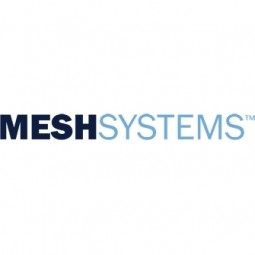下载PDF
Remotely Control, Monitor and Manage Lighting Systems

技术
- 平台即服务 (PaaS) - 设备管理平台
- 处理器与边缘智能 - 嵌入式和边缘计算机
适用行业
- 电子产品
适用功能
- 设施管理
用例
- 智能照明
挑战
Intermatic 需要一种解决方案来帮助他们的客户大幅降低与确保所有广告牌灯都亮着并正常工作相关的成本。传统方法成本高、耗时长且效率低,因为广告牌可能位于偏远地区。
客户
国际间
关于客户
Intermatic 一直在为消费者和分销商生产最先进的产品。 Intermatic 是能源控制领域久经考验的领导者,已为一系列客户类型垄断了教育、零售、办公和商业市场。
解决方案
Intermatic 利用物联网 (IoT) 的力量推出了 ET8215B 蜂窝广告牌计时器。该智能产品由MESHVista 提供支持,具有开/关定时功能、远程照明控制和监控,并为每个广告牌照明安装提供实时诊断。硬件组件 - ET8215B 蜂窝广告牌计时器软件组件 - MESHVista 物联网平台
收集的数据
Device Diagnostic Status, Equipment Status, Lighting
运营影响
相关案例.

Case Study
Remote Temperature Monitoring of Perishable Goods Saves Money
RMONI was facing temperature monitoring challenges in a cold chain business. A cold chain must be established and maintained to ensure goods have been properly refrigerated during every step of the process, making temperature monitoring a critical business function. Manual registration practice can be very costly, labor intensive and prone to mistakes.

Case Study
Cloud Solution for Energy Management Platform-Schneider Electric
Schneider Electric required a cloud solution for its energy management platform to manage high computational operations, which were essential for catering to client requirements. As the business involves storage and analysis of huge amounts of data, the company also needed a convenient and scalable storage solution to facilitate operations efficiently.

Case Study
Leveraging the IoT to Gain a Competitive Edge in International Competition
Many large manufacturers in and outside Japan are competing for larger market share in the same space, expecting a growing demand for projectors in the areas of entertainment, which requires glamor and strong visual performance as well as digital signage that can attract people’s attention. “It is becoming more and more difficult to differentiate ourselves with stand-alone hardware products,” says Kazuyuki Kitagawa, Director of Service & Support at Panasonic AVC Networks. “In order for Panasonic to grow market share and overall business, it is essential for us to develop solutions that deliver significant added value.” Panasonic believes projection failure and quality deterioration should never happen. This is what and has driven them to make their projectors IoT-enabled. More specifically, Panasonic has developed a system that collects data from projectors, visualizes detailed operational statuses, and predicts issues and address them before failure occurs. Their projectors are embedded with a variety of sensors that measure power supply, voltage, video input/ output signals, intake/exhaust air temperatures, cooling fan operations, and light bulb operating time. These sensors have been used to make the projector more intelligent, automatically suspending operation when the temperature rises excessively, and automatically switching light bulbs. Although this was a great first step, Panasonic projectors were still not equipped with any capability to send the data over a network.








